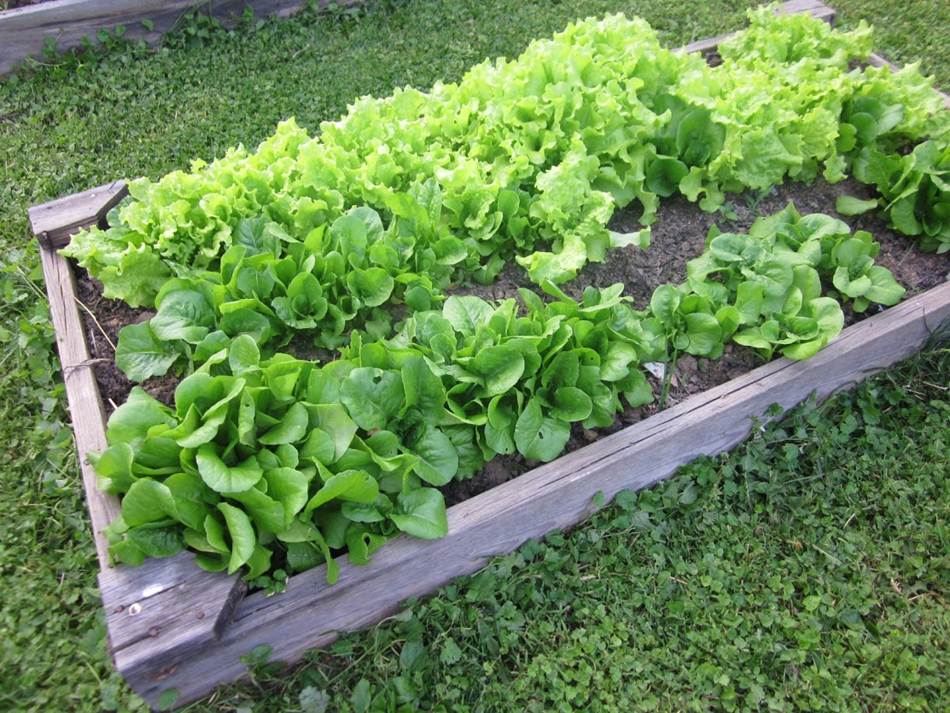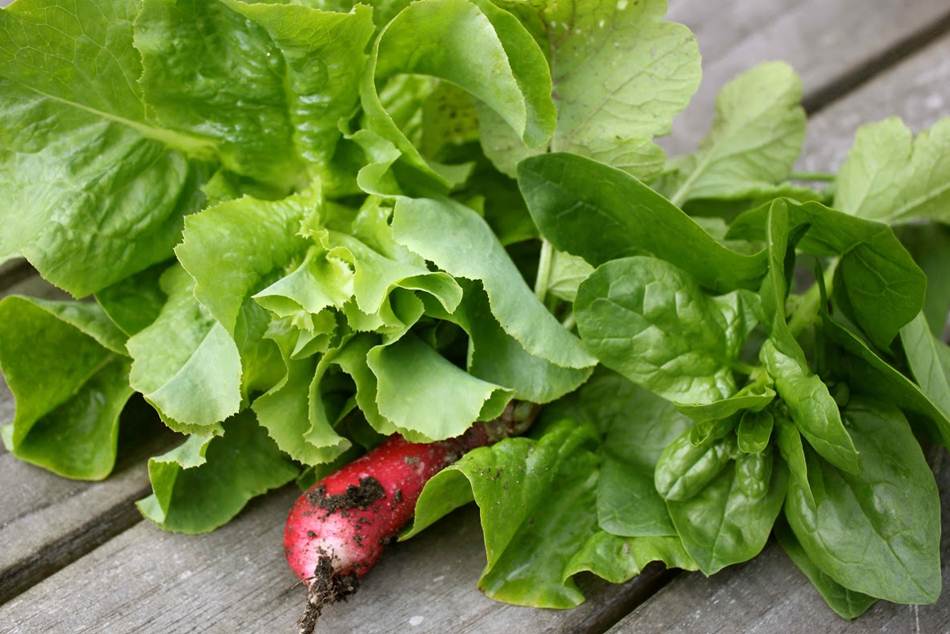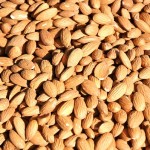In yesteryear, the humble lettuce leaf was used mostly as a limp, green garnish next to a meaty dinner, or to keep one’s picnic sandwiches fresh. Now lettuce has morphed into a group of pretty salad varieties (some as decorative as garden flowers!), that have become part of our daily cuisine, because they contain few calories but have a high mineral and vitamin content.
It’s definitely worth growing your own salad greens, because most are quick and easy crops to grow and produce a harvest within a month or two. You can do it in a sunny garden bed, or as a portable ‘salad bar’ in a roomy wooden box or wide container.
The loose-leafed varieties are the most practical because you can harvest the individual leaves for up to three months before replanting. Others, like the butterhead or iceberg, are picked when the heads form so it’s best to sow seed at 3-4 weekly intervals to have a constant supply. If you are not up to seeding your own plants, relax! Nurseries have most worthwhile varieties in stock as seedlings in punnets, which you just have to plant out.
The basics:
• They need full sun, and in summertime it is best to grow them where they will receive morning sun only as they do not like excessive heat.
• Use a fertile, well-draining soil medium.
• Space seedlings about 30 cm apart to allow for good air circulation.
• Keep the soil evenly moist at all times – drought stress can cause a bitter taste.
• Fertilise monthly in the garden, and every two weeks in containers, with an organic water-soluble fertiliser rich in nitrogen.
Leafy herbs
Grow the following herbs with their distinctive tastes alongside lettuce varieties, as they are good companions in a salad bowl. They can be used in dressings and vinaigrettes or freshly picked, chopped and added to the other salad ingredients.
Salad burnet (Sanguisorba minor) is a low-growing, bushy perennial that has delicate, fern-like leaves with a cucumber-like flavour. To keep the plant looking good, remove dead leaves and spent flowers.
Rocket (Eruca vesicaria) is used almost exclusively as a salad herb, and the young leaves have a distinct peppery taste. It combines well with feta cheese, avocado, olive oil, Parmesan cheese, pears, pecans, and a combination of garlic, tomatoes and mozzarella cheese. Harvest the leaves regularly to improve the quality. Cut the plant down when it flowers because the leaves produced after flowering are very pungent.
Troubleshooting
Plant a few nasturtium seeds between the leafy stuff. The flowers and leaves are edible and great for salads too. These plants are also known to be good companions that will keep pests like aphids away from the juicy salad leaves. Do battle with snails by placing saucers full of beer around the plants. They love it, get helplessly drunk and drown. Otherwise use organic snail pellets, but to stop them from disappearing into the soil or falling into the wrong hands, use the following technique. Cut a plastic bottle in half and bury it in the soil with the neck just peeking out. Feed pellets into the opening. This will ensure that only the snails get to them.
Classic salad
• Handful of mixed lettuce leaves
• Handful of rocket leaves
• Carrot, sliced into ribbons
• Small cucumber, sliced into ribbons
• Cherry tomatoes
• Spring onion, chopped
• Black olives
• Green olives
Dressing
• 2 Tbsp white wine vinegar
• 2 Tbsp olive oil
• A pinch of mustard powder
• Salt and freshly ground pepper, to taste
Method
Was and prepare the vegetables and place them in a bowl. Whisk the dressing ingredients together in another bowl, season well and pour over the salad.
For more information on bringing Life to your Garden, visit their website or join the conversation on the Facebook page.




